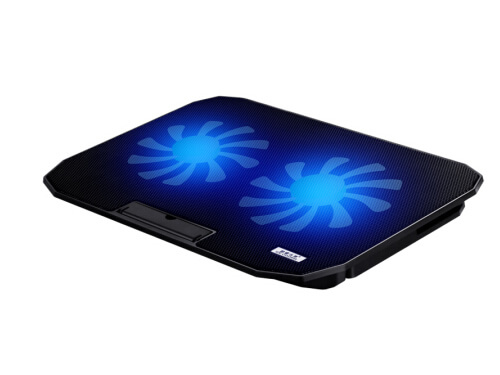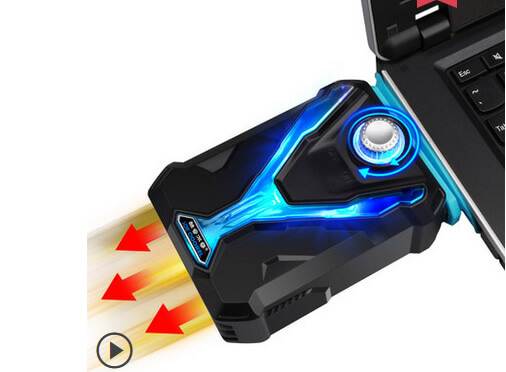Laptop overheating is a common issue that many people have experienced. Generally speaking, the thermal performance of laptops is not optimal, which can easily lead to problems such as breakdowns, blue screens, and other issues.
In this article, I will explain why your laptop overheats and provide three solutions to prevent overheating. This guide applies to all laptop brands, including Acer, Asus, Dell, Apple, Lenovo, HP, Toshiba, and more. With these methods, you can easily cool your laptop and extend the lifespan of its components.
Why is your laptop overheating?
1. Too much dust
Too much dust can block the vents, leading to poor internal air circulation. At the same time, dust will also accumulate on the cooling fan, thereby reducing its cooling efficiency.
2. Too many running programs
When a laptop runs too many programs, the load on the CPU, memory, graphics card, hard drive, motherboard, and power supply rises sharply. These components generate a large amount of heat under high load, causing the laptop to overheat.
3. Use Environment
When the ambient temperature around a laptop is too high, the heat it generates increases, and its cooling efficiency relatively decreases.
How to stop your laptop from overheating
1. Use a laptop cooling pad
Although you can’t add a cooling fan inside the laptop, you can buy a laptop cooling pad or an exhaust radiator to improve heat dissipation.

For laptop users, it is especially easy to get hot when playing games in summer, and sometimes, it is impossible to solve the problem of high ambient temperatures by simply cleaning the dust.
In this case, it is recommended to use a cooling pad or an exhaust radiator to improve heat dissipation.
I have used both radiators. My suggestion is that the exhaust radiator offers better cooling performance.
2. Clean Vents
After the laptop is used for a long time, the vents on the bottom and sides may be covered with dust and lint, which will block the air flow, causing the hot air inside the laptop not to flow out. At this time, we need to clean the dust and lint from the vents. You need to use compressed air and thin plastic tools to clean the dust.
However, these vents are located differently depending on the laptop model. You need to find the right vents before cleaning them.
You can regularly clean the cooling vents, which can significantly reduce the risk of component damage and prevent your laptop’s performance from declining.
3. Clean the heatsink and CPU fan
After using the laptop for more than a year, its fan will be covered with a layer of dust, and the heat sink and CPU fan will be covered with dust and lint. We need to open the laptop to clean the dust, which is the only way to solve the laptop overheating issue. However, many people have no experience in disassembling laptops. This method is relatively difficult.
Tools need:
1. Thermal grease
2. Screwdrivers
3. Brush
4. wiping rag
Step 1. First, we need to remove all the screws that secure the back cover. Then, insert an old credit card under the back cover and slide it to release the latches that hold the back cover in place.
Step 2. Disconnect the battery connector from the motherboard. This step is very important to prevent damage to the hardware.
Step 3. Remove all screws securing the heatsink and cooling fan, and disconnect the fan cable from the motherboard.
Step 4. Remove the fan from the heatsink and clean it with a brush. The most important thing is to clean the dust and lint from the heatsink vent.
Step 5. Then, use a brush to clean the dust from the heatsink and fan assembly. Clean the dust and lint from the heatsink and fan assembly bay.
Step 6. Use a wiping rag to remove thermal grease on the heat sink, CPU, and GPU chips.
Step 7. Apply new thermal grease to the CPU and GPU chips, then reinstall the heat sink assembly on the laptop.
To achieve better heat dissipation, replacing the old fan with a new one is a wiser choice. You can visit the parts store to buy a new CPU fan for your laptop.
Also Read: How to Clean a Laptop Fan and Heatsink
I believe the above three methods can solve your laptop overheating problem. If you have any issues during the cleaning process, please leave a message in the comment section so we can assist you.


Yes, we have added it to the list.
I have an HP Pavilion dv7t-4100 laptop. Its fan spins almost all the time, and my laptop gets hot and shuts down automatically. I know it has to be cleaned from the inside, and I did this a while ago. My question is this: I don’t remember if there was a thermal pad or thermal grease between the CPU/GPU and the heatsink. I have thermal grease on there now, but I suspect that the grease isn’t enough to fill the gap between the top of the CPU/GPU and the bottom of the heatsink. If the gap isn’t filled and there is space, then the grease won’t transfer the heat to the heatsink. So no matter how fast the fan turns, the heat isn’t going anywhere. Whether there was grease or not initially, can I put a thermal pad between the CPU/GPU and the heatsink instead of applying new grease? Also, if the thermal pad isn’t thick enough to fill the gap, can I stack thermal pads in order to build up thickness? Alternatively, if the thermal pad is too thick and has to be squeezed under the heatsink, can the extra pressure on the CPU/GPU cause any problems, or will it work fine?
You should buy a thermal grease and apply it to your CPU and GPU instead of using a thermal pad.
I also face this problem. You need to service the laptop by opening it and removing the dust inside the fan chamber.